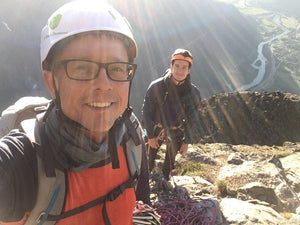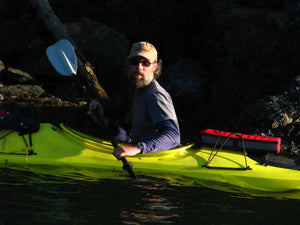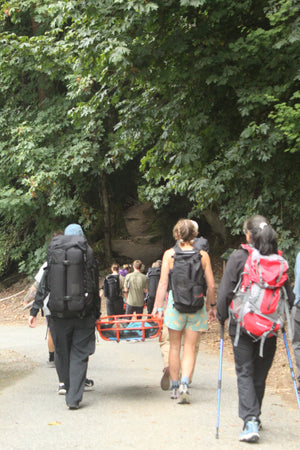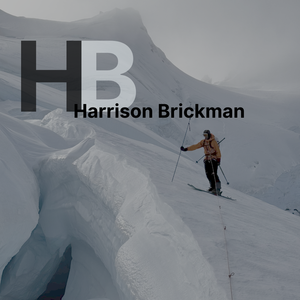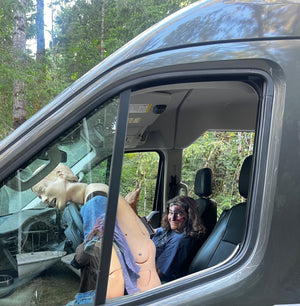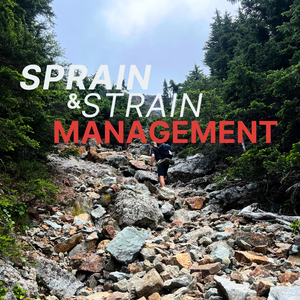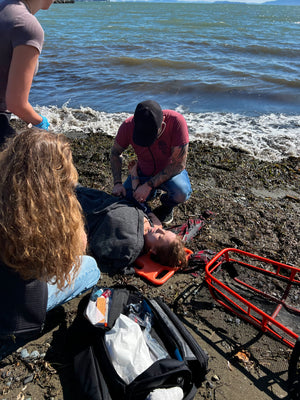Your Backcountry Gear as a Medical Toolkit
Sep 26, 2025
In the backcountry, every ounce counts. We meticulously pack gear that is lightweight, multifunctional, and durable. What we may not always consider is that many of these items can be creatively repurposed for medical emergencies. Medical improvisation is not about taking unnecessary risks; it’s about using established principles to stabilize a patient when dedicated medical supplies are unavailable or exhausted. Here’s how the gear you already carry for trail-running, backpacking, skiing, or mountain biking can become a powerful extension of your first aid kit.
Splinting Fractures and Dislocations
A suspected fracture or major joint dislocation requires stabilization to reduce pain, prevent further injury, and allow for a safer evacuation. Your everyday gear is perfect for this.
For Rigidity: Trekking poles, ski poles, an ice axe, a folded-up sleeping pad (like a Therm-a-Rest Z-Lite), or even a mountain bike frame or wheel can serve as the rigid component of a splint.
For Padding: A down jacket, fleece sweater, or spare wool socks can be used to pad the splint, protecting the skin and ensuring a snug fit. Proper padding is critical to prevent pressure injuries during a long carry-out.
For Securing: Strips of cloth cut from a buff or bandana, spare webbing straps from a backpack, ski straps, or even duct tape wrapped around a water bottle are excellent for securing the splint in place. The key, as taught in wilderness medicine, is to check for circulation, sensation, and movement (CSM) in the digits below the splint before and after its application (Johnson et al., 2018).
Wound and Bleeding Management
While a dedicated first aid kit is best, severe bleeding may require more material than you have on hand.
Direct Pressure: A clean (or cleanest available) piece of clothing, like a merino wool base layer or a synthetic shirt, can be wadded up and used to apply firm, direct pressure to a wound.
Improvised Tourniquet (Use with Extreme Caution): In a life-threatening hemorrhage where direct pressure fails, a tourniquet may be necessary. This is a last resort. A triangular bandage (often found in first aid kits) or a wide strip of durable fabric (like a webbing strap) can be used with a "windlass," such as a sturdy stick or tent stake, to apply mechanical pressure. It's crucial to understand that this is a high-stakes skill. As research on prehospital care emphasizes, improper tourniquet use can cause significant tissue and nerve damage, so formal training is essential before ever attempting this (Kragh et al., 2015).
Patient Transport and Environmental Protection
Moving an injured person or protecting them from the elements is often the most significant challenge.
Improvised Litter: A large, sturdy backpack can be emptied and used to drag a patient a short distance. For a longer carry, a litter can be constructed by threading two long poles (like sturdy branches or ski poles) through the sleeves of two or three jackets.
Hypothermia Wrap: Protecting an injured person from heat loss is paramount. A combination of a sleeping bag, an emergency space blanket (a must-have item), and a waterproof tarp or tent rainfly creates an effective "burrito wrap" to insulate them from the ground and the air, preventing or treating hypothermia.
Thinking creatively about your gear empowers you to respond effectively. The goal is always to use sound medical principles to bridge the gap until professional help arrives.
References
Johnson, D. E., Schimelpfenig, T., & The National Outdoor Leadership School. (2018). NOLS Wilderness Medicine (6th ed.). NOLS.
Kragh, J. F., Walters, T. J., Baer, D. G., Fox, C. J., Wade, C. E., & Holcomb, J. B. (2015). Survival with emergency tourniquet use to stop bleeding in major limb trauma. Annals of Surgery, 253(4), 830-835. https://doi.org/10.1097/SLA.0b013e3182142674
Schimelpfenig, T. (2018). Wilderness First Aid: Emergency Care for Remote Locations (5th ed.). FalconGuides.
